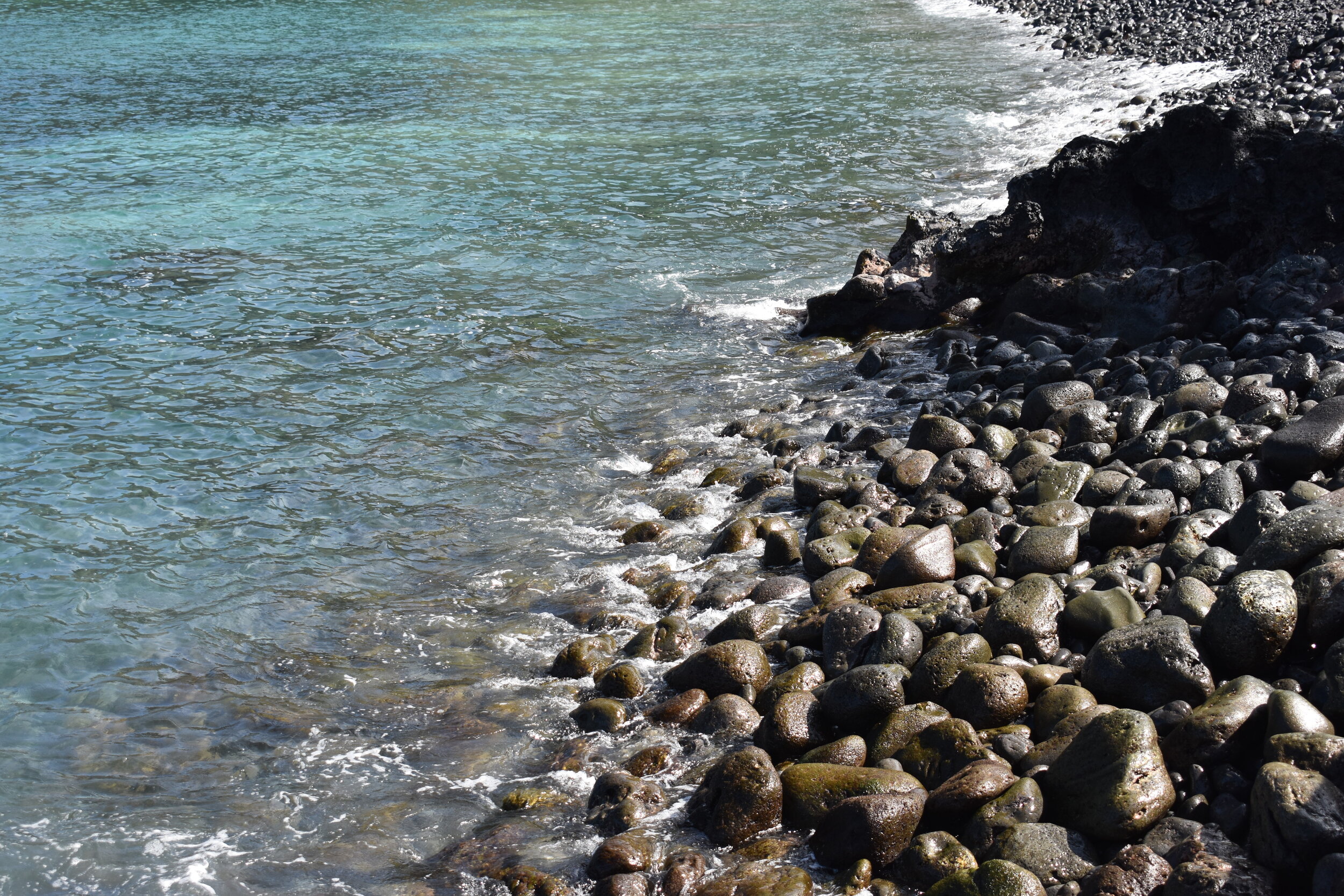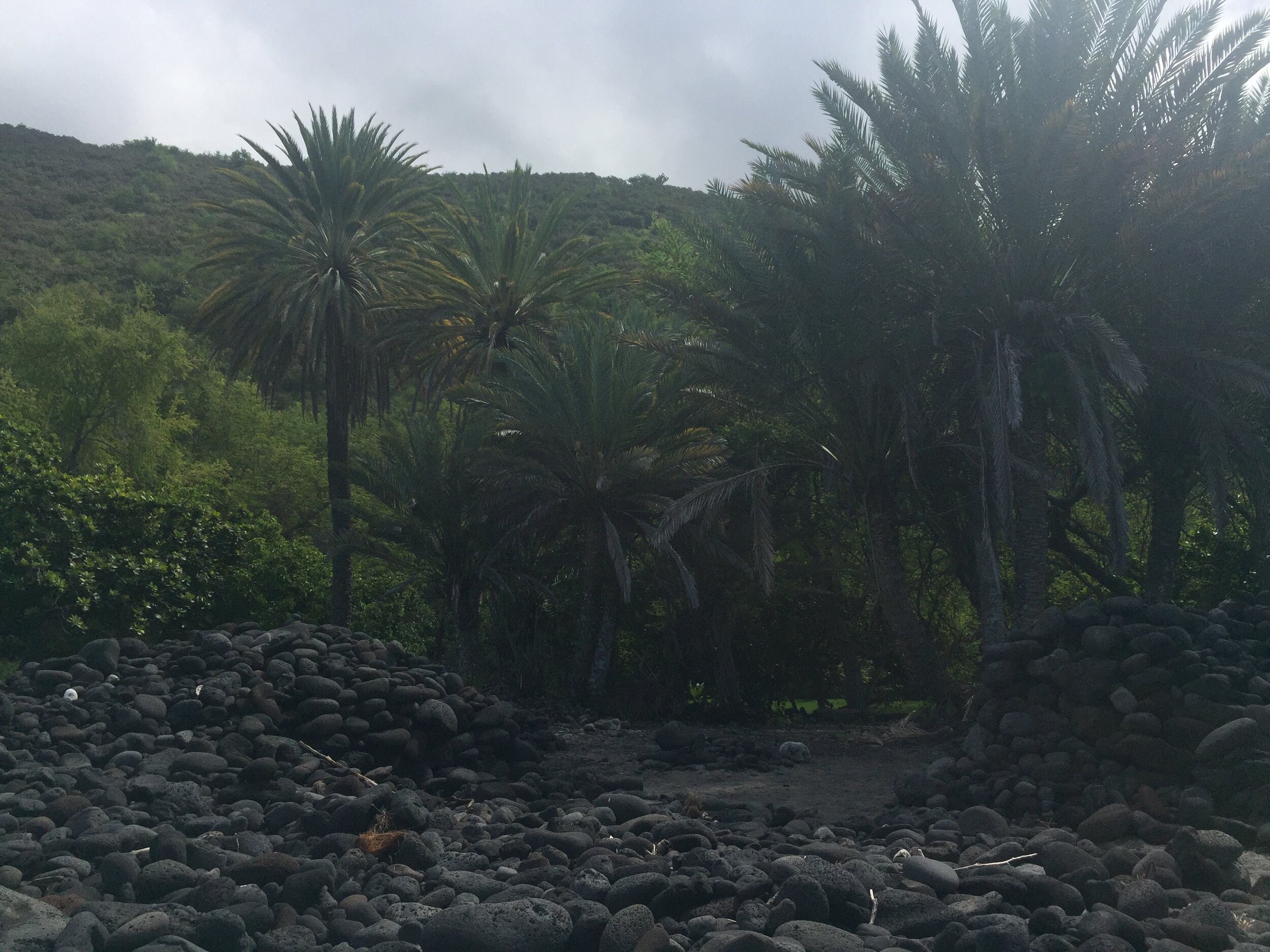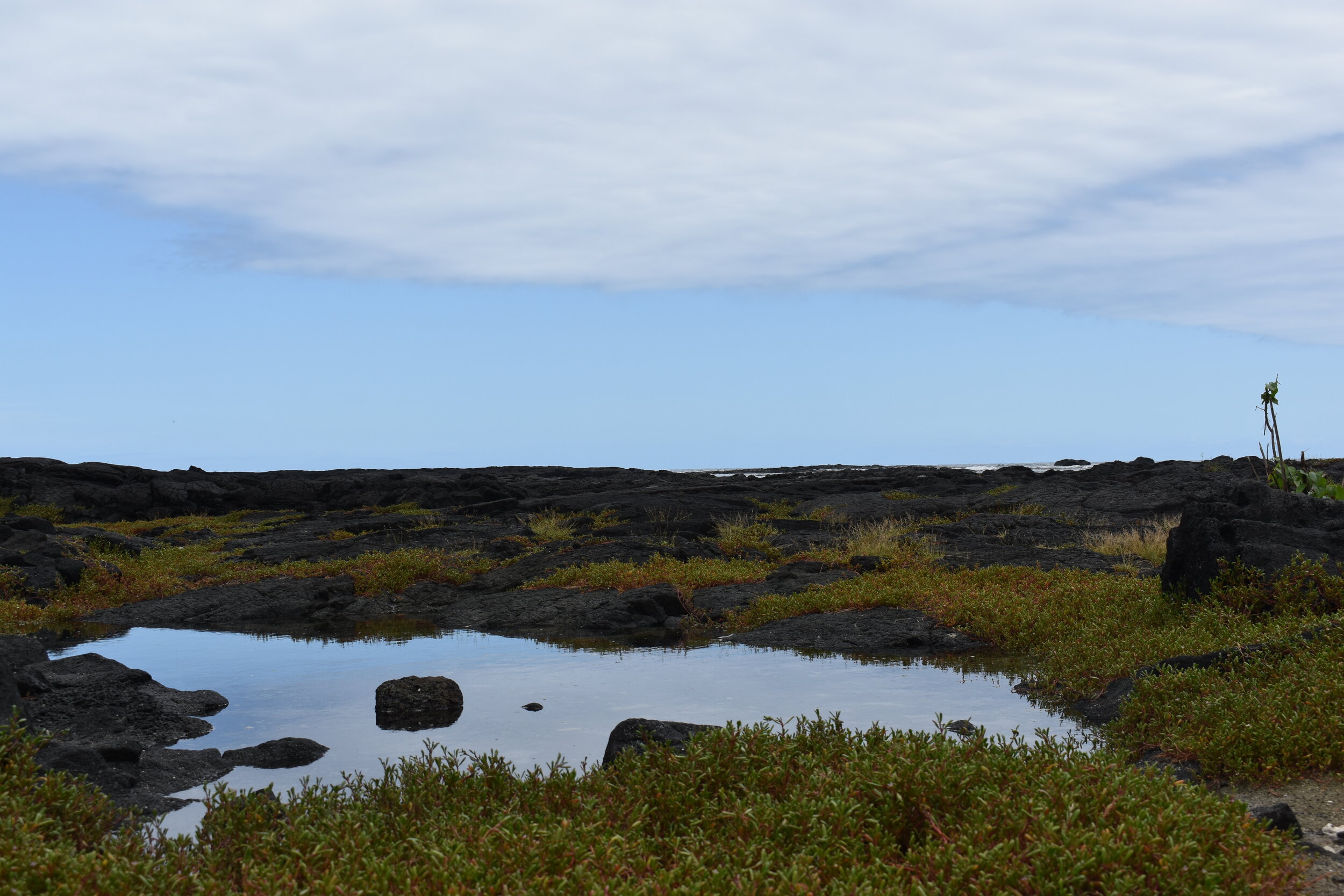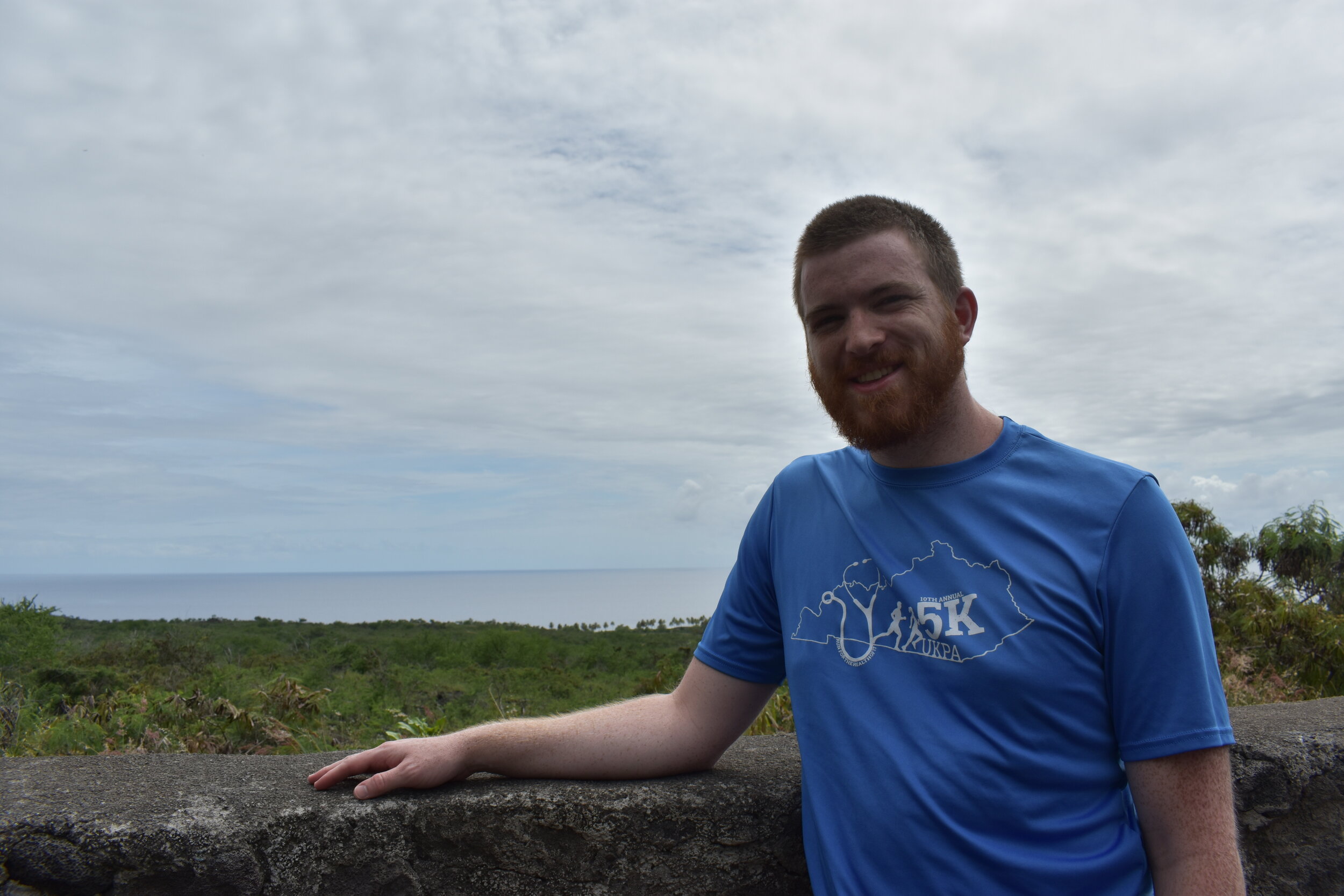Travel With Me: Big Island, Hawai'i (Day One)
If any of you know me or have been following the blog for at least a year, you’ll know that my husband and I went through the lovely experience of a COVID wedding last July. We postponed our three-years-in-the-making “real” wedding and re-planned a micro-wedding in Red River Gorge in the span of two months. This included cancelling our honeymoon—a meticulously planned (if I do say so myself) two weeks in Barcelona and Mallorca, Spain. It was impossible to plan another honeymoon so last minute and in the middle of all the COVID unknowns, so the best we could do last year was two days hiking in Shenandoah National Park.
Well, we made it another year, got vaccinated, celebrated our one year anniversary with a reception and vow renewal at our original venue, and have just returned from our honeymoon 2.0! We still weren’t sure whether Europe would re-open in time (or be safe) to follow through with our original travel plans, so instead we opted for Hawaii, which we knew we could get to, at the very least, with a negative COVID test. Luckily, however, Hawai’i’s travel restrictions changed at the beginning of July and allowed for vaccinated travelers to forgo the test.
So, vaccination cards at the ready, we set off for the Big Island in mid-July, ready to finally, finally celebrate our honeymoon a year late!
*Important note: Hawaiian place names often use an accent mark called a macron over vowels (ā in Pāhoa, for example). However, as you can see, Squarespace unfortunately does not support this accent mark as regular text. To avoid causing reading difficulty due to the change in font, I will be spelling these words without the macron.
Accommodations/Transportation: AirBnb in PAhoA & Rental Car
To avoid the oftentimes exorbitant hotel costs and get us out of the tourist trap areas of the island, we decided to stay at an Airbnb in Pahoa, HI, which is on the east side of the island. Our Airbnb experience was perfect—our host brought us fresh pineapple and bananas from his garden, and we were set up with guidebooks, a cooler, snorkel equipment, boogie boards, and beach towels. There was a small black sand beach (Kehena Beach) within walking distance of the house (though we didn’t go to this particular beach until our last day—oops), and there were plenty of food and hiking options within driving distance. The shower was outdoors in the privacy of the garden, which was beautiful; however, the only caveat was that I love a hot, hot, hot shower and it rained pretty frequently at night, which meant it was sometimes too cold for me to comfortably shower when I wanted to.
Bonus: we saw a lot of gold dust day geckos on this trip, and that included inside the house. We have no idea how they were getting in, but they were so cute!
Since we decided to go with a semi-off-the-tourist-grid location for our Airbnb and we also planned on seeing as much of the island as possible, that pretty much necessitated getting a rental car. My best advice: book it early and plan on a possibly long wait to pick it up at the airport. Everyone wants a rental car for Hawaii, and we waited about 45 min to an hour to get ours once we arrived in Kona. We booked through Dollar for this rental, and we were flabbergasted to see that the Chevy Spark we’d reserved was (at no extra charge or request by us) changed into a Camaro. It was probably the fanciest car I’d ever ridden in, and I’ll be honest, I let out a sigh of relief when we finally returned it without a scratch.
Day One: Nopo’opo’o Beach Park
Our first day on the Big Island was dedicated solely to snorkeling (with a dash of cultural history thrown in), and our first stop was Nopo’opo’o Beach Park. This spot is located at the southern end of Kealakekua Bay, where Captain James Cook initiated European contact with the Big Island when he landed here in 1779. Across the bay is the Captain Cook monument, which marks where Cook was killed a month later after he and his crew exploited the Hawaiians’ reverence of the Europeans (they possibly even believed that Cook was the Hawaiian god Lono) and eventually murdered over 30 Hawaiians. Still remaining here are the ruins of Hiki'au Heiau, a temple dedicated to Lono, the god of agriculture and fertility of the land.
The Napo'opo'o area was severely affected by the 2011 tsunami resulting from the earthquake in Japan. Due to erosion and the effects of the tsunami, there is no sand remaining at this beach, making the shore somewhat difficult to cross and relax on. Evidently, some of the best snorkeling on the island can be found at the Captain Cook monument; however, it is accessible only via a 4-mile trail (and I’d promised Ryan we wouldn’t spend our whole honeymoon hiking) or by boat/kayak (which we didn’t have the budget to rent). The waves were a little too choppy right beside the rocky shore for me to jump in at this beach, but Ryan said the water just a little further out was exceptionally clear and calm, though no reef meant there wasn’t much to see in this part of the bay. Before too long, we packed our bags and moved on to our next destination not too far down the coast.
Lunch: Shaka Tacoz
Our gecko friend (well, about six gecko friends) joined us for lunch at this food-truck-slash-restaurant, enjoying the ocean views from the patio seating while also trying to steal some of our food. Shaka Tacoz was one of the least expensive meals we had in Hawaii, but it remains one of the best. Just truly excellent fish tacos.
Pu’uhonua o Honaunau National Historical Park
Our next snorkeling location was right beside a national (historical) park, so of course, we had to go. (Pro-tip: don’t leave your National Park Pass at home and end up having to pay $20-30 at all the parks you visit, no matter how many pictures of the pass you try to show them.)
Puʻuhonua o Honaunau is a ceremonial site contained within a lava rock wall known as the Pa Pu’uhonua, or Great Wall, and the ocean. Ancient Hawaiian society was dictated by a rather rigid social structure that designated certain people, places, activities, things, and times as sacred. Breaking kapu, or sacred law, was often punishable by death. Pu'uhonua o Honaunau is the most well-preserved of the ancient Hawaiian puʻuhonua, which were sites of refuge for those who broke kapu to avoid punishment and seek forgiveness or for the families of those involved in war to find safety.
The Great Wall was built over 400 years ago using traditional, dry masonry techniques in which the stones are fitted together without mortar, making it resemble a lava rock version of Kentucky’s stone fences. The wall stands at nearly 12 feet tall, 18 feet in width, and stretches an impressive 965 feet in length.
Also located in this park are sites used by royalty, which included chiefly residences, ceremonial-related structures, the Heleipalala fishponds, and Keone'ele Cove canoe landing. Beside the Great Wall is a reconstructed hale poki, or consecrated house, called Hale o Keawe. In ancient times, the temple housed the remains of 23 deified high chiefs or aliʻi, including Keawe-i-kekahi-aliʻi-o-ka-moku, the great-grandfather of Kamehameha I, the first ruler of the Kingdom of Hawaii, and their bones contained mana (divine power) that gave the temple its significance. Hale o Keawe continues to be a functioning religious site for Native Hawaiians.
Snorkeling at Two Steps
Two Steps is on the left. Pu’uhonua o Honaunau National Historical Park is on the right.
Our next stop after walking through the park was to go snorkeling at Two Steps, a popular snorkel spot about a two minute walk from the parking lot at Pu’uhonua o Honaunau. Its nickname comes from the lava rock “steps” you take to get down into the water. As someone who had never snorkeled before and has reservations about deep water (thank God I didn’t know sharks have been spotted here), I really appreciated Two Steps. Beside the boat ramp is a shallow protected pool without a reef, so you can practice your snorkeling skills and check that all the gear is functional before heading out into the real deal. We saw plenty of tropical fish here (including Gill from Finding Nemo), a pretty good amount of living coral (though a lot on the right side was killed in bleaching events six years ago), and I saw sea urchins for the first time. The water was clear and calm, and there wasn’t a strong current, which made for a very enjoyable afternoon. My only wish is that we’d bought an underwater camera or Go-Pro to capture all our snorkeling adventures on this trip!
Dinner: Kaleo's Bar & Grill (Pahoa, HI)
Kaleo’s was one of Ryan’s favorite restaurants over the course of our trip, so it’s definitely worth checking out if you’re in the area. It was very busy, and we were thankful that we’d made reservations!
I hope you enjoyed reading about our adventures on the Big Island. Stay tuned for botanical gardens and more snorkeling on day two!

























